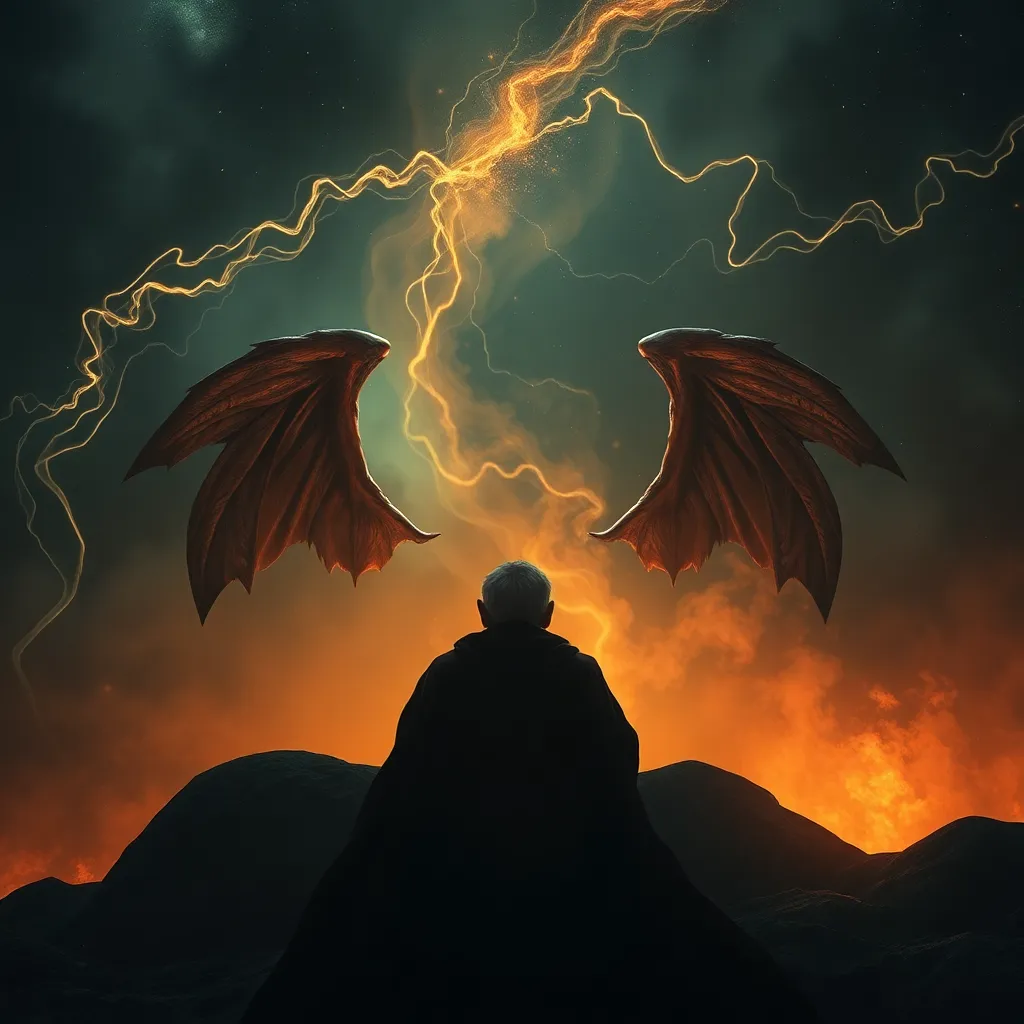The Dybbuk’s Farewell: A Reflection on the Dybbuk’s Enduring Presence in Human History
I. Introduction
The Dybbuk is a fascinating entity rooted deeply in Jewish folklore, often depicted as a restless spirit that possesses the living, typically of a deceased person who has not found peace. This concept of the Dybbuk captures the imagination and serves as a metaphor for various human experiences, making it a significant figure in cultural history.
Throughout the ages, the Dybbuk has transcended its origins, evolving into a symbol of grief, trauma, and unresolved issues in the human psyche. The purpose of this article is to explore the Dybbuk’s enduring legacy, examining its historical origins, cultural significance, and its relevance in contemporary society.
II. Historical Origins of the Dybbuk
The origins of the Dybbuk date back to early Jewish texts and folklore. The term itself is derived from the Hebrew word “dibbuk,” which means “to cling” or “to attach.” It first appeared in the 16th century in the context of Kabbalistic teachings, where it was described as a dislocated soul seeking to inhabit the body of a living person.
Over the centuries, the concept of the Dybbuk evolved significantly:
- In the 18th century, tales of the Dybbuk began circulating in Eastern European Jewish communities, often serving as cautionary tales.
- By the 19th century, the Dybbuk had become a staple of Jewish folklore, with stories emphasizing themes of possession and the consequences of unresolved personal issues.
The cultural contexts that gave rise to Dybbuk stories include the historical struggles of the Jewish people, including persecution and loss, which contributed to the creation of narratives surrounding spiritual unrest and the afterlife.
III. The Dybbuk in Literature and Theatre
The Dybbuk has found its way into various literary works and theatrical productions, most famously in S. Ansky’s play “The Dybbuk,” first performed in 1920. This play is a seminal work that encapsulates the essence of the Dybbuk and its themes of love, loss, and spiritual possession.
Prominent literary works featuring the Dybbuk include:
- The Dybbuk by S. Ansky
- The Golem by Gustav Meyrink
- Various short stories and folktales from Jewish tradition
The Dybbuk serves as a central theme in these works, shaping public perception through compelling narratives that intertwine personal and collective traumas. The portrayal of the Dybbuk in literature and theater has allowed audiences to grapple with complex human emotions, making it a powerful symbol of spiritual and psychological struggles.
IV. Symbolism and Themes Associated with the Dybbuk
The Dybbuk embodies a range of symbolism and themes, most notably possession and spiritual unrest. It represents the idea that unresolved issues in life can lead to spiritual disturbances, affecting not only the individual but also their loved ones.
Key themes associated with the Dybbuk include:
- Possession as a manifestation of psychological trauma
- The metaphor of unresolved grief and its impact on the living
- Connections to contemporary issues of mental health and alienation
In modern society, the Dybbuk’s narrative resonates with those struggling with mental health issues, as it encapsulates the feeling of being trapped by one’s past experiences and emotions.
V. The Dybbuk in Modern Media
In recent years, the Dybbuk has made its presence known in films and television, showcasing its adaptability and continued relevance. Notable representations include:
- The 2012 horror film “The Possession,” which is loosely inspired by Dybbuk folklore.
- Television shows that incorporate Dybbuk themes, exploring possession and the supernatural.
Modern reinterpretations of the Dybbuk have had a significant impact on traditional beliefs, often merging folklore with contemporary horror elements. Digital storytelling platforms, such as podcasts and web series, have further revived interest in the Dybbuk, introducing it to new audiences and ensuring its legacy endures.
VI. Cultural Significance and Rituals
Traditional Jewish rituals related to the Dybbuk are steeped in history and offer insight into community beliefs surrounding possession and spiritual unrest. These rituals often include:
- Exorcism ceremonies conducted by rabbis to free individuals from Dybbuk possession.
- Community gatherings where stories of the Dybbuk are shared, reinforcing collective memory.
The role of storytelling within these rituals cannot be overstated, as it serves to connect individuals with their cultural heritage and communal identity. In contemporary society, rituals surrounding the Dybbuk have adapted, reflecting modern understandings of grief and loss while still honoring tradition.
VII. The Dybbuk’s Legacy in Contemporary Culture
The influence of the Dybbuk extends beyond folklore and into popular culture and art. Its haunting presence has inspired:
- Artistic works, including paintings and sculptures that explore themes of possession and loss.
- Ongoing scholarly research examining the Dybbuk’s significance in Jewish identity and cultural resilience.
The Dybbuk serves as a powerful symbol of Jewish identity, representing the struggles and triumphs of a people throughout history. Its legacy continues to be a source of inspiration and reflection for those exploring their cultural narratives.
VIII. Conclusion
In summary, the Dybbuk’s enduring presence in human history highlights its significance as a cultural and psychological symbol. Its journey from ancient folklore to modern media illustrates the importance of preserving such narratives, as they provide insight into the human condition.
As we explore the Dybbuk’s legacy, we are reminded of the necessity of understanding and addressing our unresolved grief and trauma. The relevance of the Dybbuk in modern society speaks to the ongoing need for connection, understanding, and healing within our communities.



